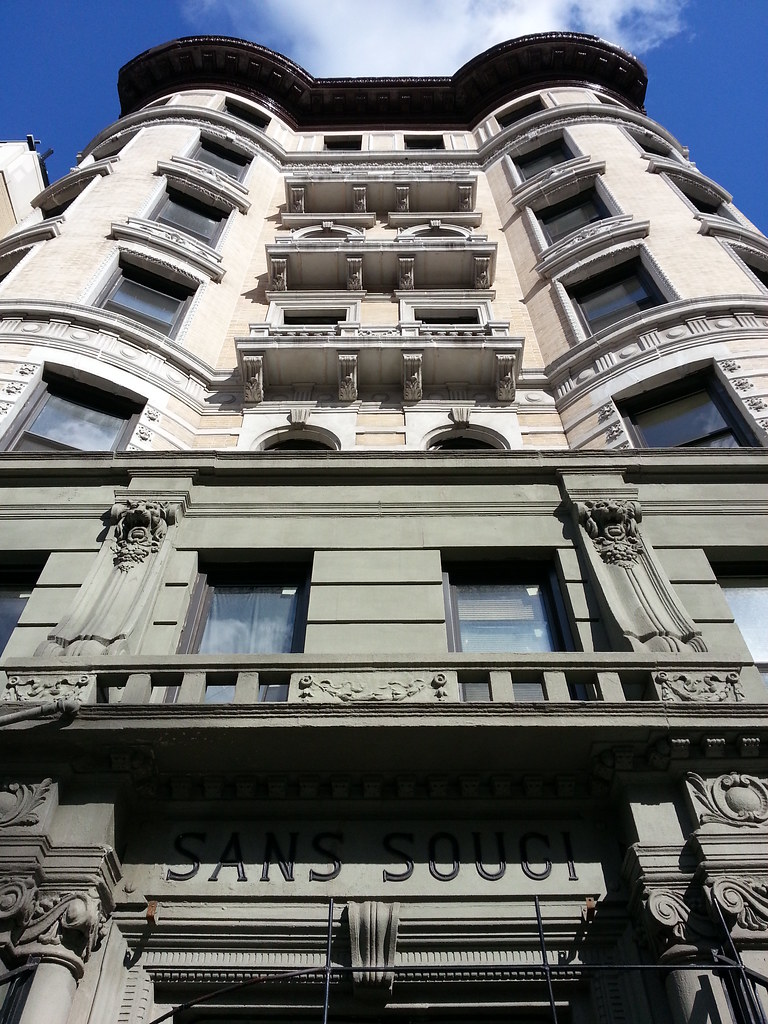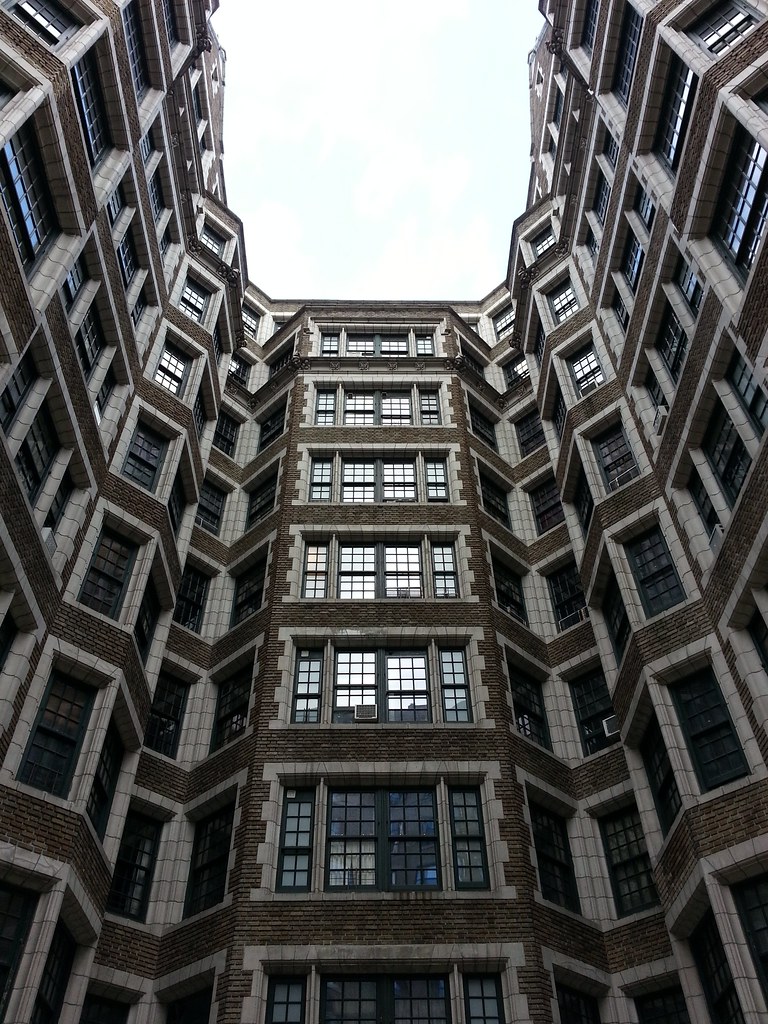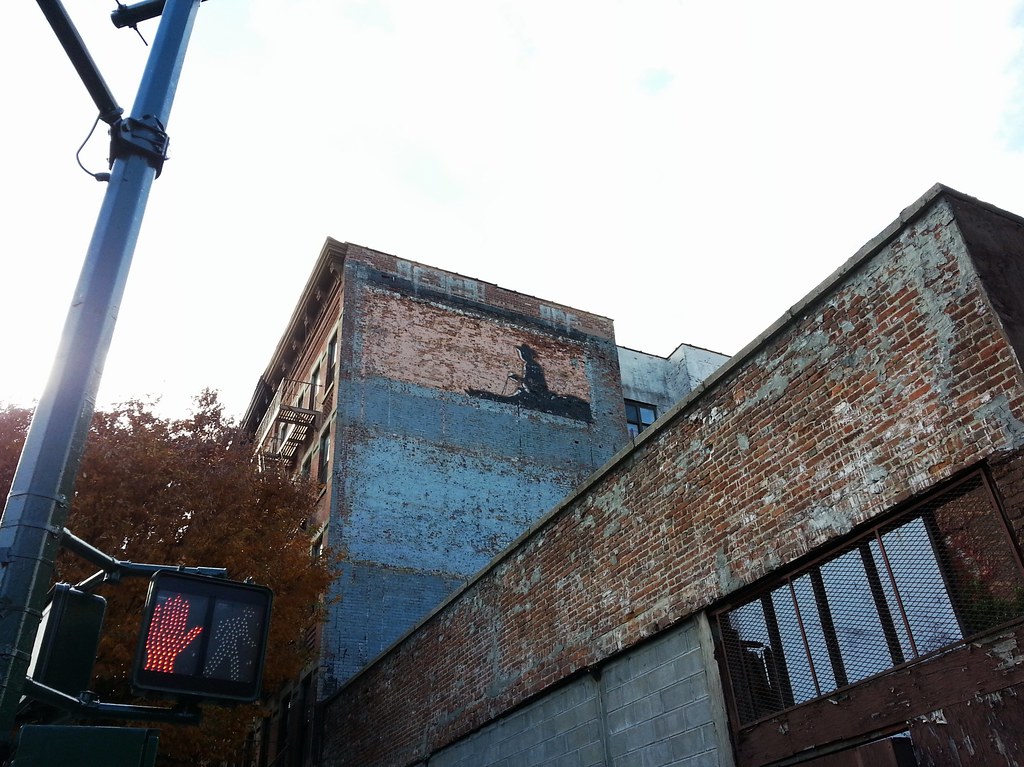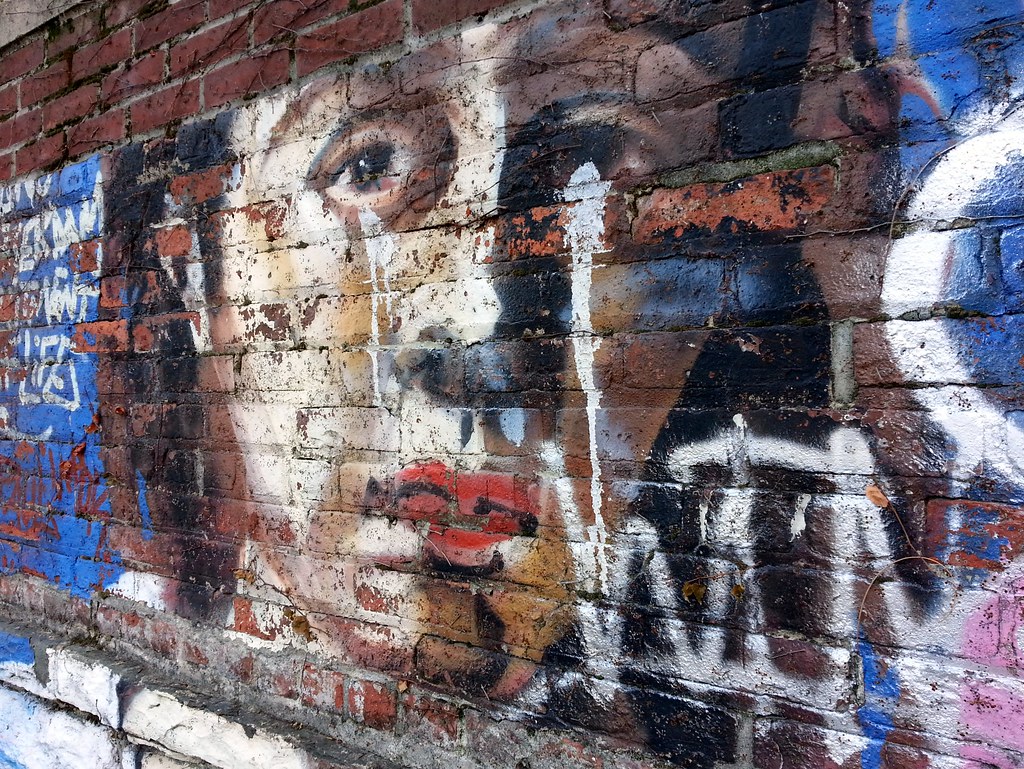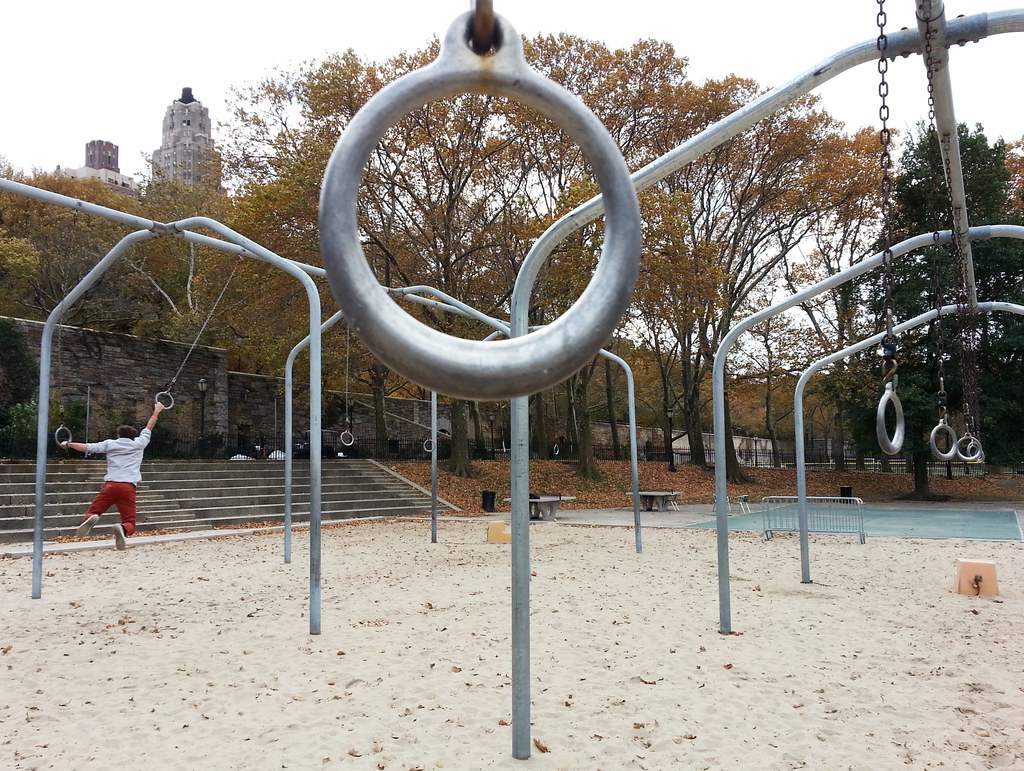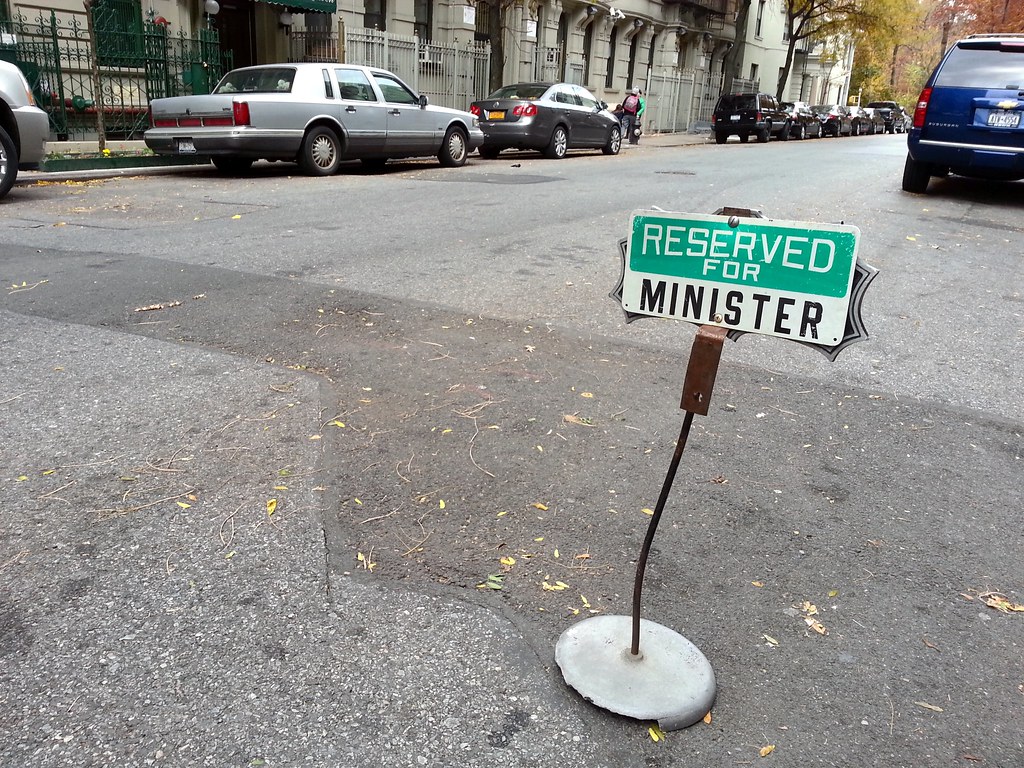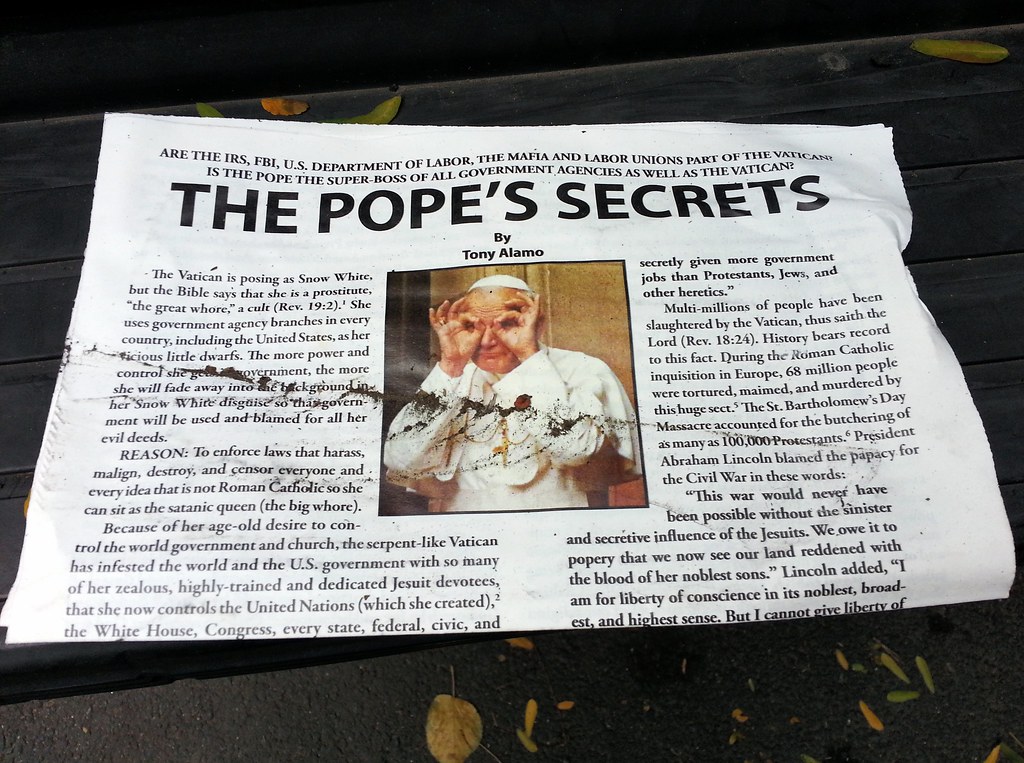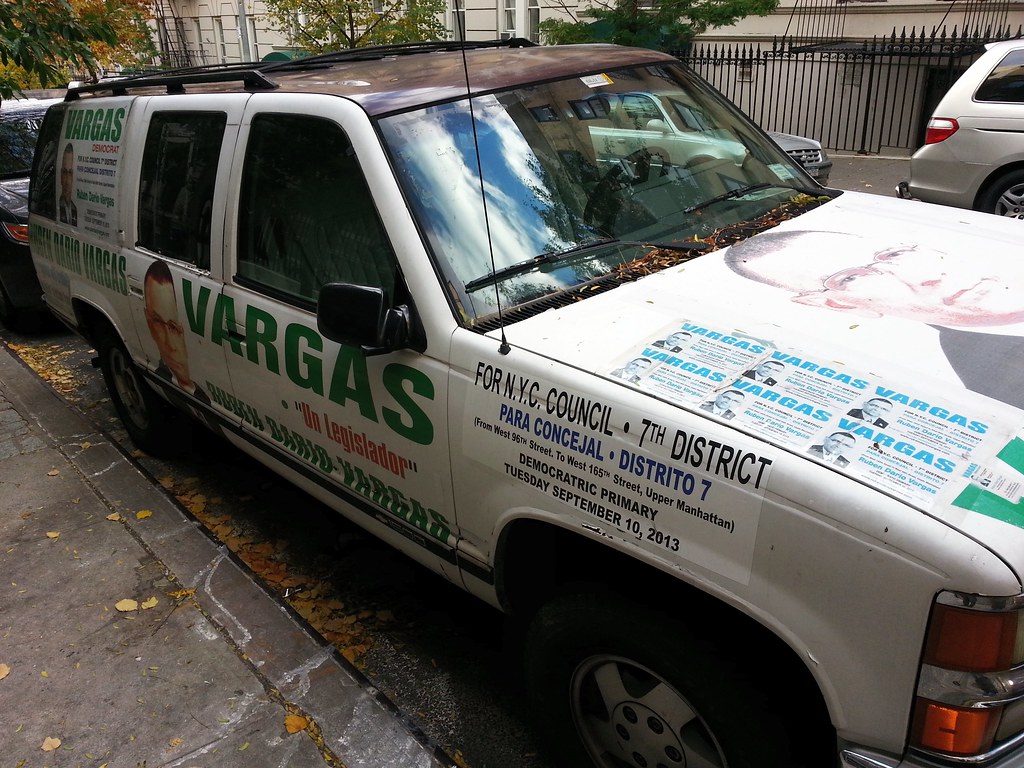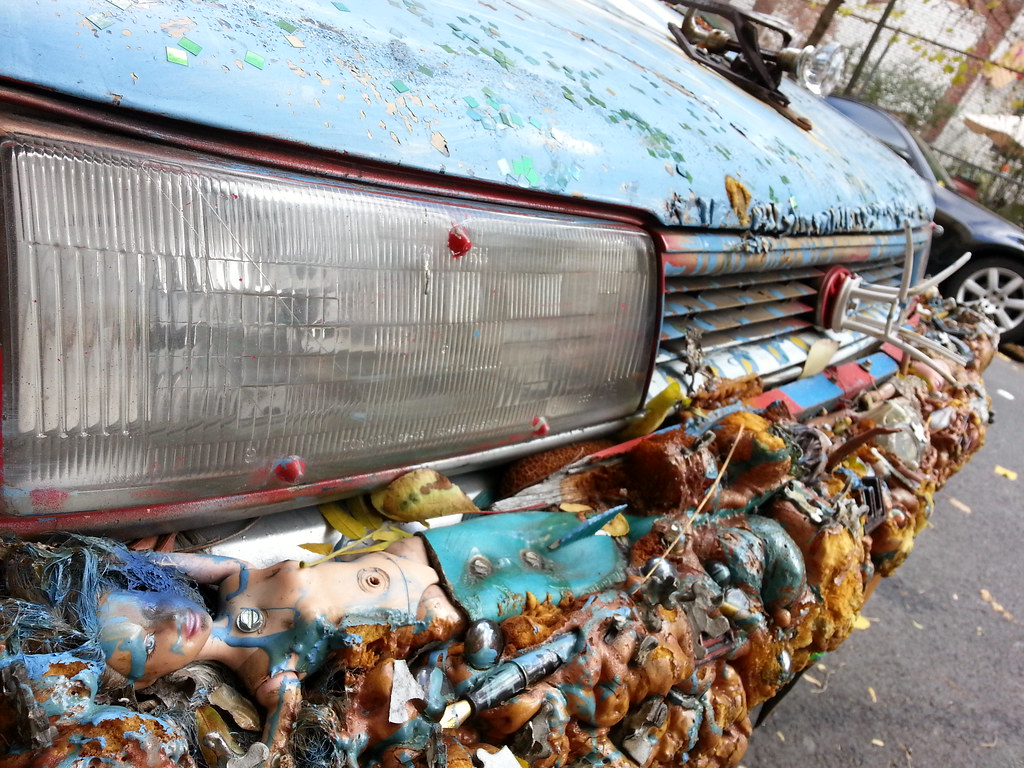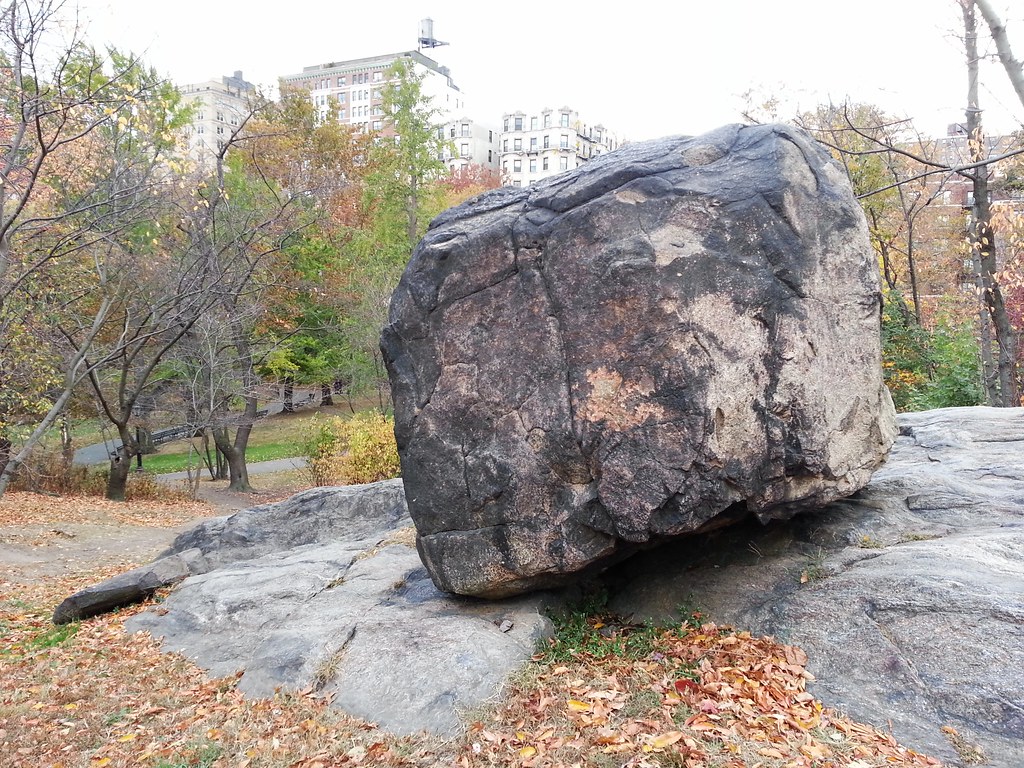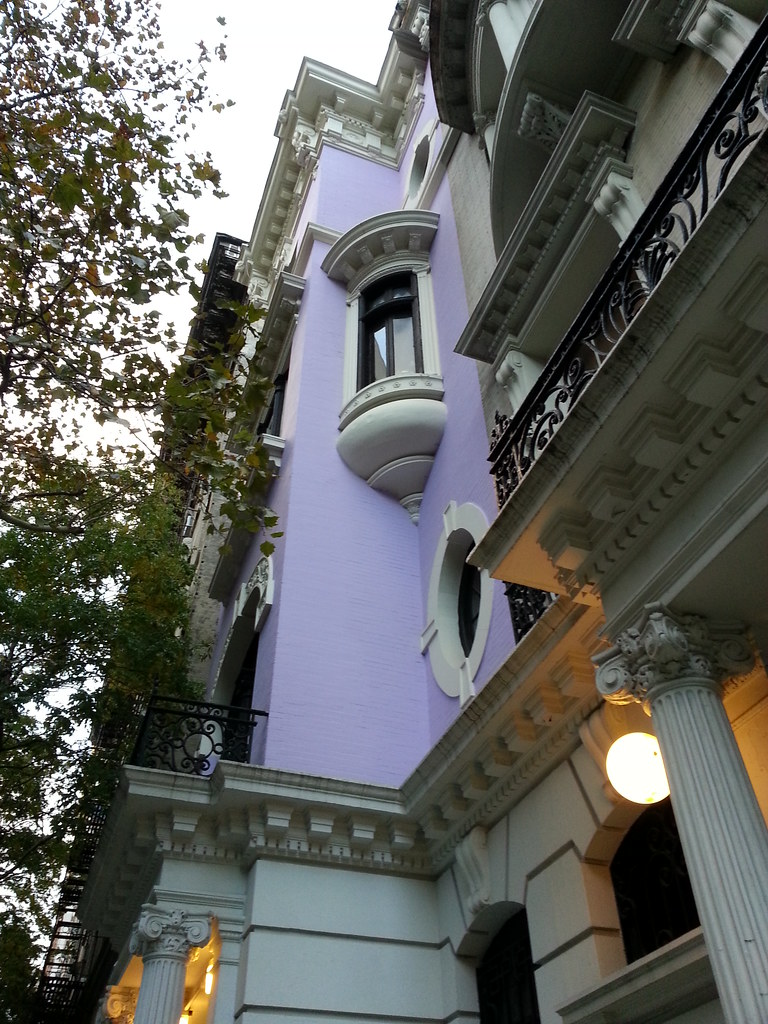
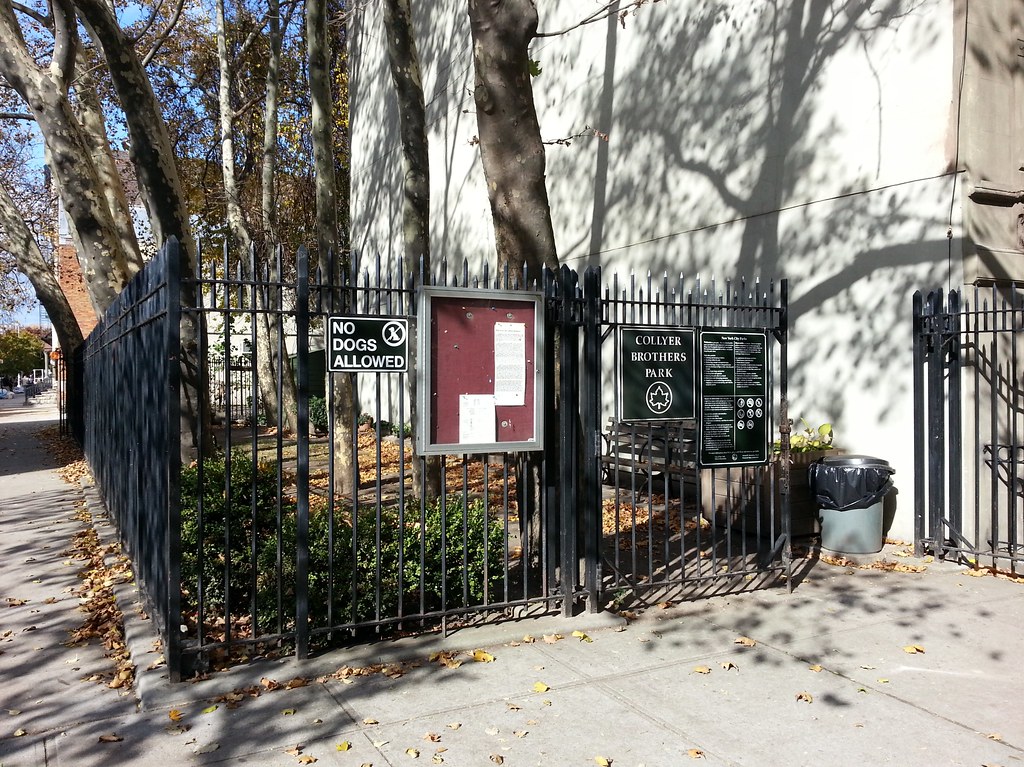
This is the former site of the row house once occupied by Homer and Langley Collyer, "the hermit hoarders of Harlem".
As told by Christopher Gray in the NY Times:
In the 1920's, Homer had a regular job in a title research office, but walked eight miles to and from the office every day. But by the [late 1930s], he was blind and almost paralyzed, cared for exclusively by Langley. . . .The story may have receded from public consciousness over the years, but, even today, "in New York City, and along much of the East Coast, a dwelling jammed rafter-high with junk is referred to by rescue personnel, with dismay and no small degree of respect, as a 'Collyers' Mansion.' As in, primary searches delayed because of Collyers' Mansion conditions."
On March 21, 1947, the police got an anonymous call saying that Homer Collyer was dead. The interior of 2078 Fifth Avenue was stuffed so high with papers and furniture that the police had to enter the house on the second floor by a ladder. They lowered Homer's body out the window in a sack. It appeared that he had died of hunger.
Langley Collyer had last been seen a few days before on the stoop of the building, but there was no sign of him now. Meanwhile, searchers began cleaning out the house. In the next few days they found the jawbone of a horse, a flier protesting the vote for women, unfinished knitting left by Mrs. Collyer, part of an auto chassis, pianos, furniture, papers and thousands of books, all while searching for Langley Collyer. By March 24, about 2,000 people had gathered at the corner of 128th and Fifth Avenue to watch.
There were 53 people at Homer Collyer's burial on April 1 at Cypress Hills Cemetery in Brooklyn -- but no sign of Langley. Then, on April 8, it turned out that Langley had died in the building. Police found his body, wedged to the floor by one of the many booby traps he had created. Bringing food to Homer by a tunnel through stacks of books and newspapers, he had triggered the fall of hundreds of pounds of debris that trapped and, apparently, suffocated him. The brothers died within a few feet of each other.
Check out this Daily News gallery for a collection of historical images of the Collyer brothers and their house.
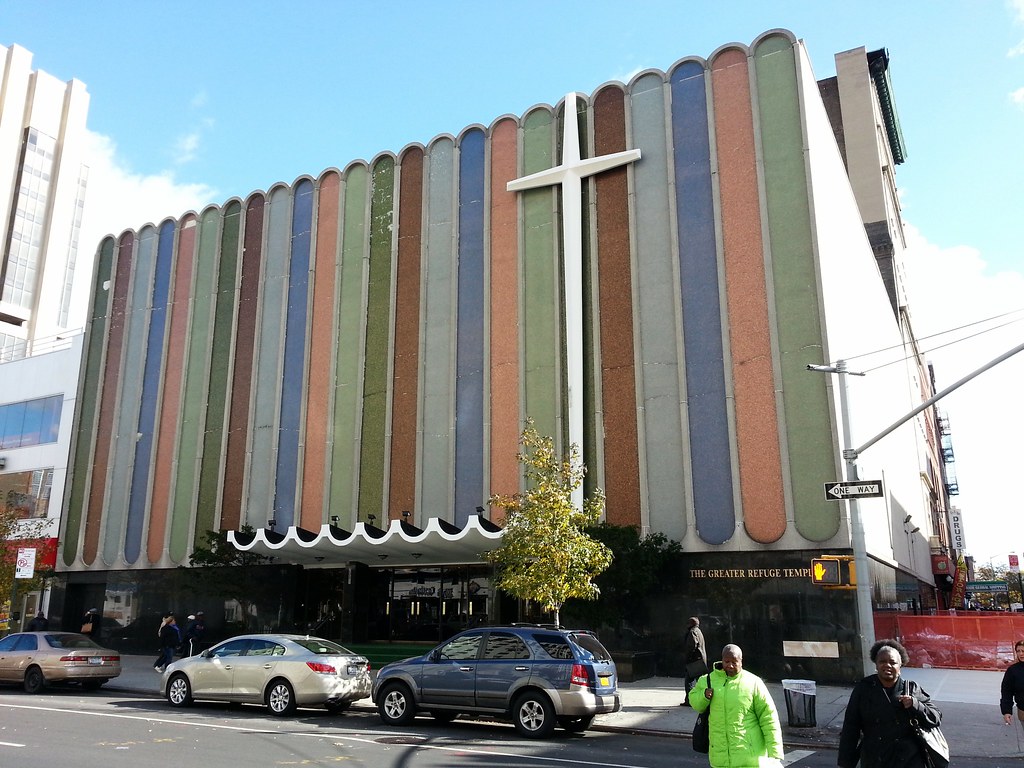
"Divided into 24 elongated mosaic lozenges—emerald, bronze, gold, jade, periwinkle, and cornflower—this Bossa-Nova facade at 2081 Adam Clayton Powell Jr. Boulevard, by Costas Machlouzarides, dates to 1966. But underneath is the much older Loew's Seventh Avenue Theater", previously the Harlem Casino (photos), an event and entertainment venue built on the 1889 foundation of the unfinished West End Theatre, a failed project backed by an extortionist who went by the alias "Napoleon Wood".
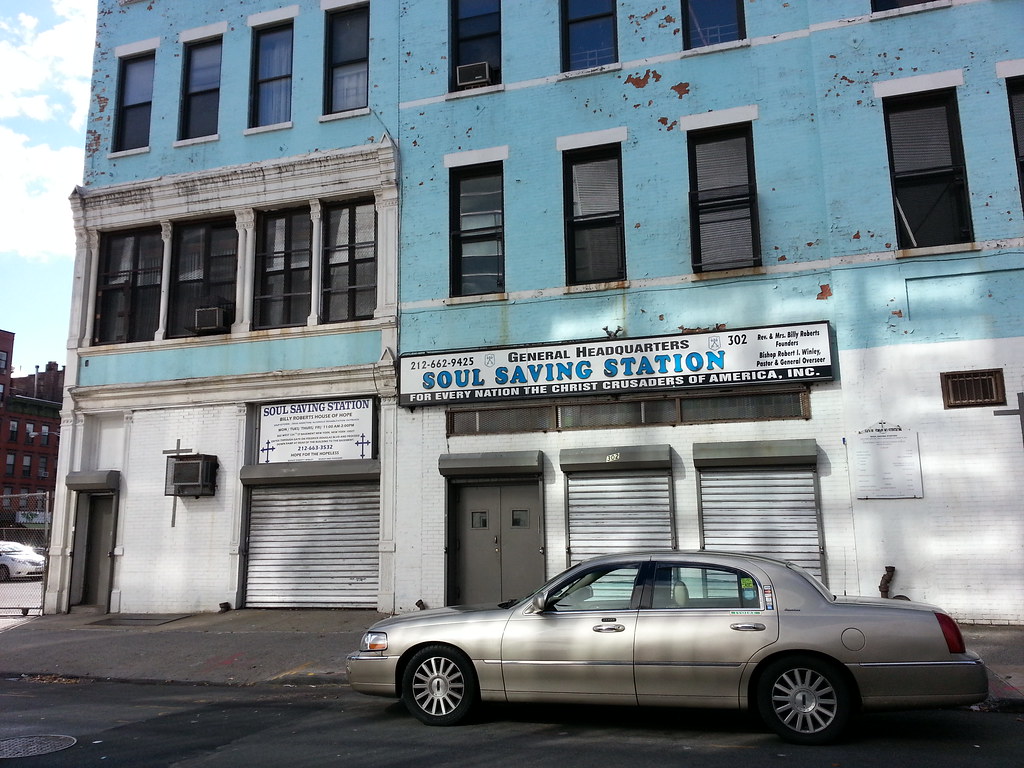
Apparently, "the Soul Saving Station's name was intended to invoke images of a filling station, where a person might fill up their soul with the Holy Spirit just as one might fill up a car with gasoline."
This reminds me of a church I used to pass in Arlington, Virginia, that was built above an actual filling station (photo). I always thought its slogan should be "Fuel for your eternal combustion engine".

Standing at the northwest corner of Central Park, this statue is the centerpiece of a multifaceted memorial to the great abolitionist, which was finally dedicated in 2011 after years of delays. You can see all the features of the memorial in this video.
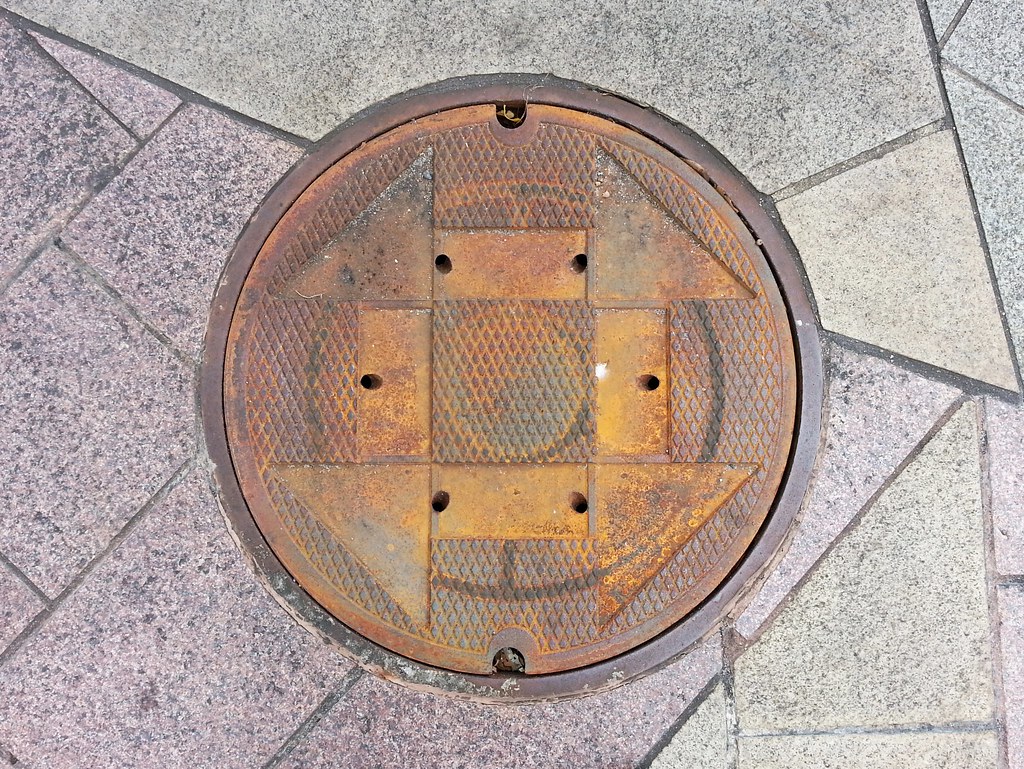
This unusual-looking manhole cover echoes one of the patterns of the large granite quilt that underlies most of the Frederick Douglass Memorial. The quilt's inclusion in the design was based on the appealing but unfounded theory that these patterns were used to embed hidden messages in what looked like ordinary quilts, allowing important information to be surreptitiously conveyed to fugitive slaves on the Underground Railroad. The memorial was originally going to include two plaques discussing this secret code, but an uproar among historians led the city to scratch that idea. (I'm pretty sure it got scratched, anyway. I didn't see any such plaques, and the Parks Department's page about the memorial says nothing about the code.)
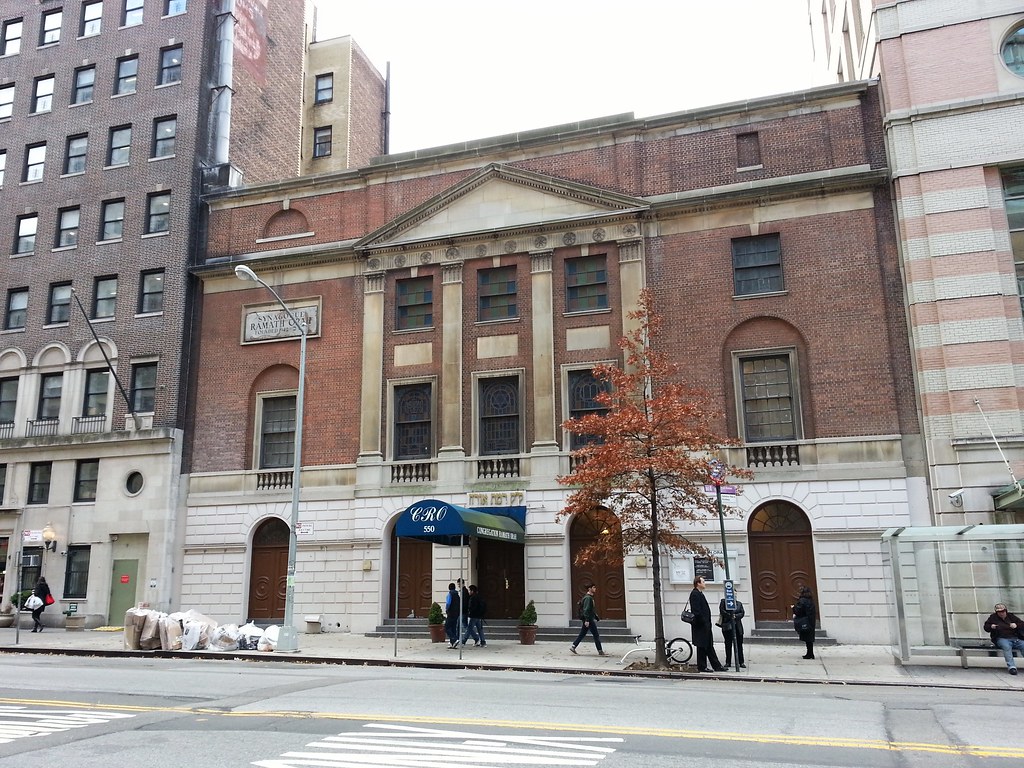
This synagogue was originally the West Side Unitarian Church. Ground was broken here in 1921 with a larger building in mind (which would have looked like this), but financial troubles forced the church to scale back its plans. Congregation Ramath Orah, founded by the former chief rabbi of Luxembourg and a few dozen other countrymen who had fled Nazi persecution, has met here since 1942.
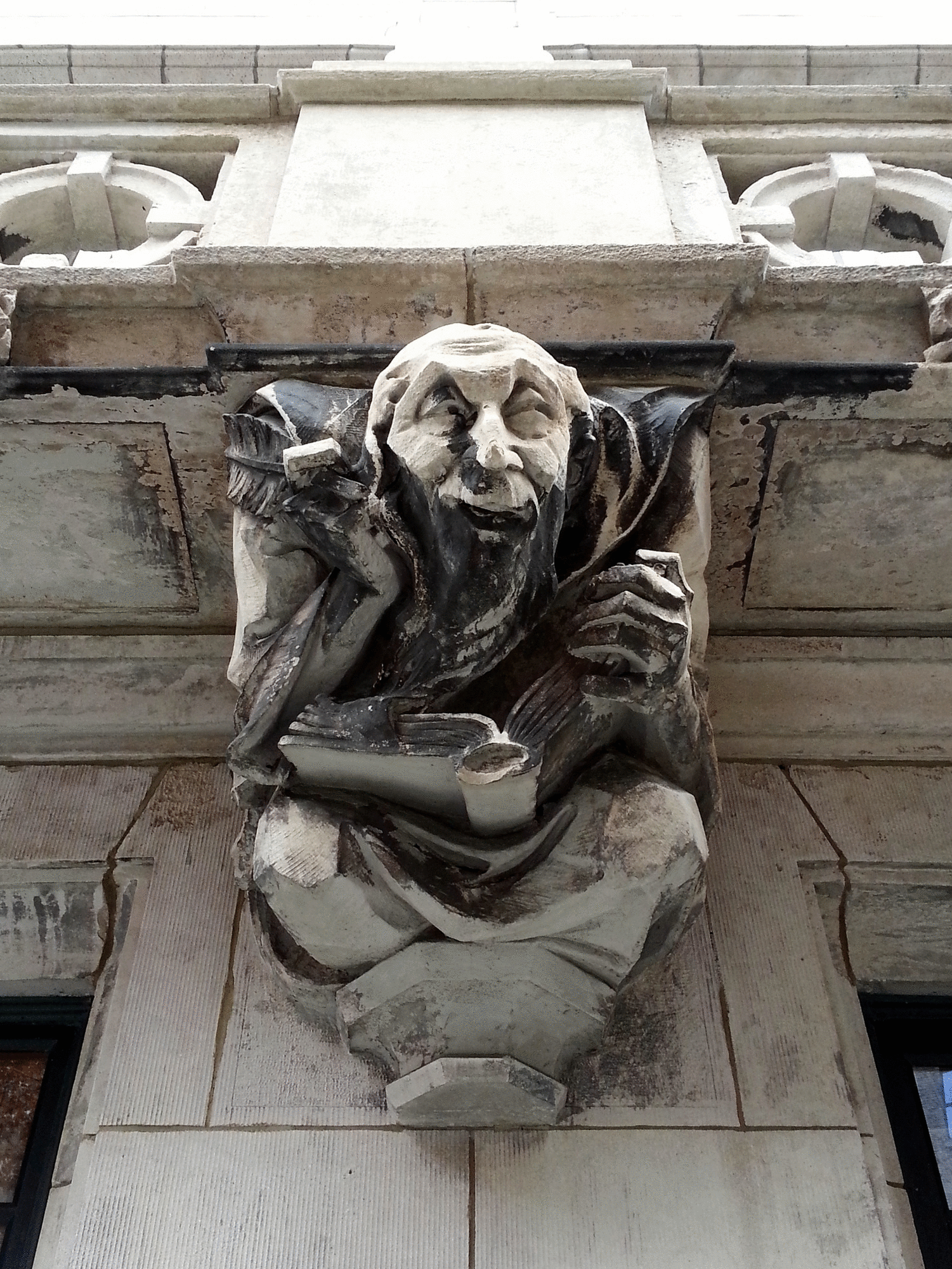
These bizarre figures (more photos here) adorning the Britannia apartment building have gone from pristine to filthy in a mere two and a half years.
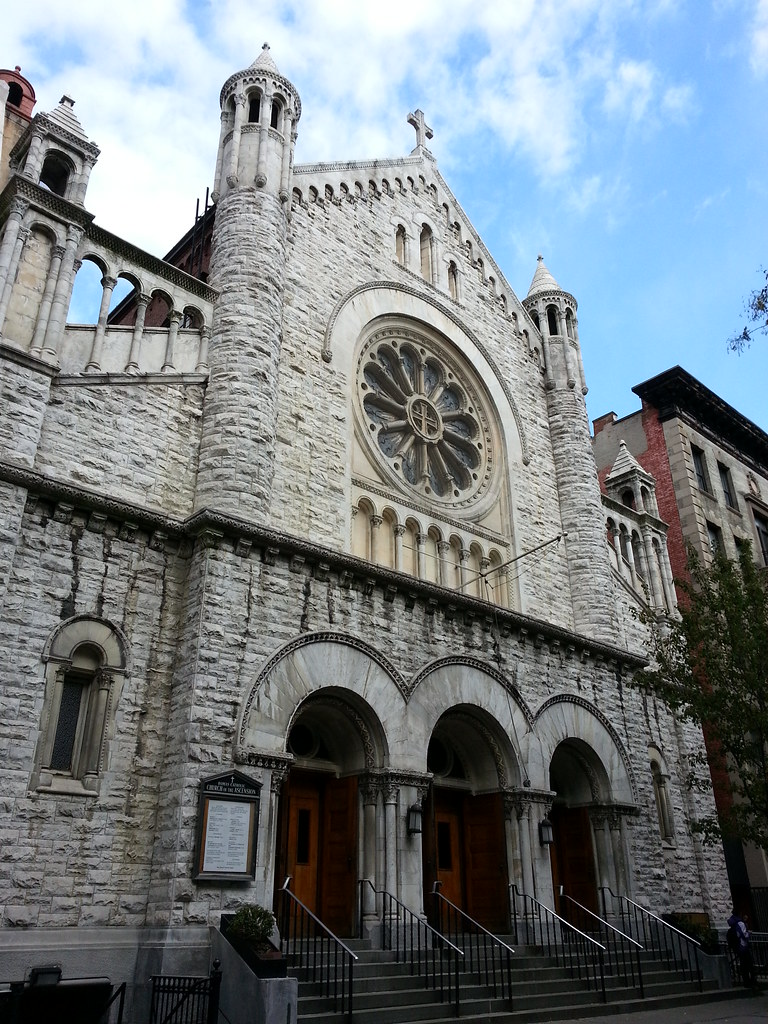
This church, built in 1896-97, is home to a jazz mass and a monthly martini night.
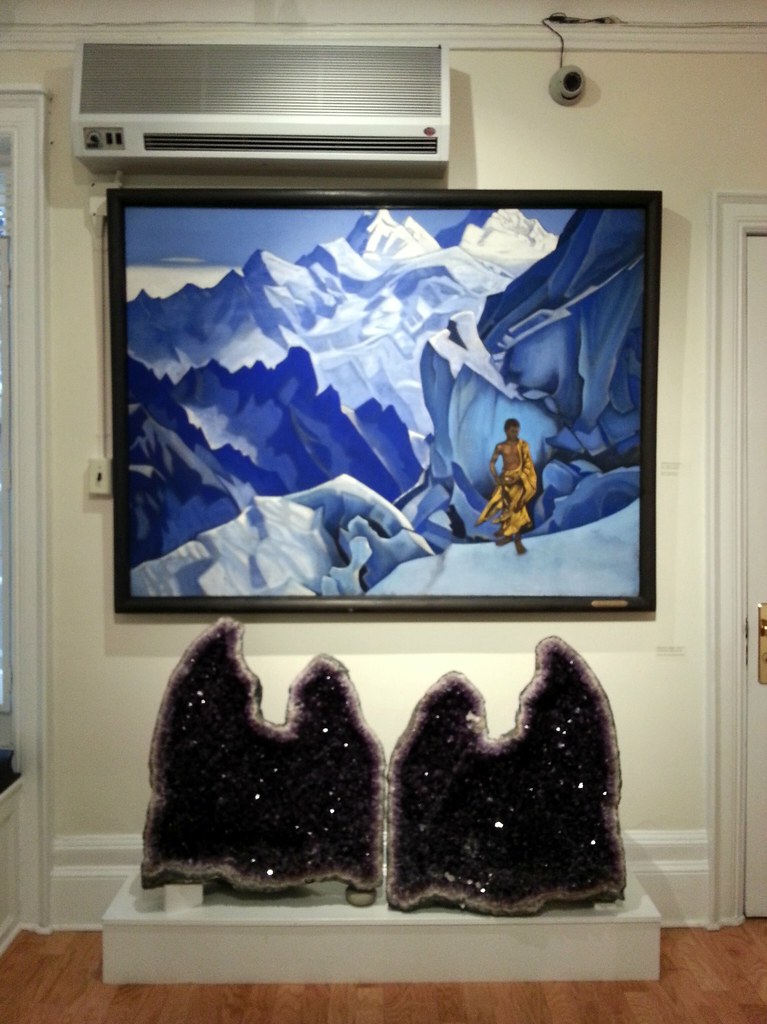
I had never heard of Nicholas Roerich ("a Russian painter, writer, archaeologist, theosophist, enlightener, philosopher, and public figure") before I popped my head into this row house that is "indistinguishable as a museum except for the small sign in front, [and] chock-full of amazing natural scenes from the Himalayas".
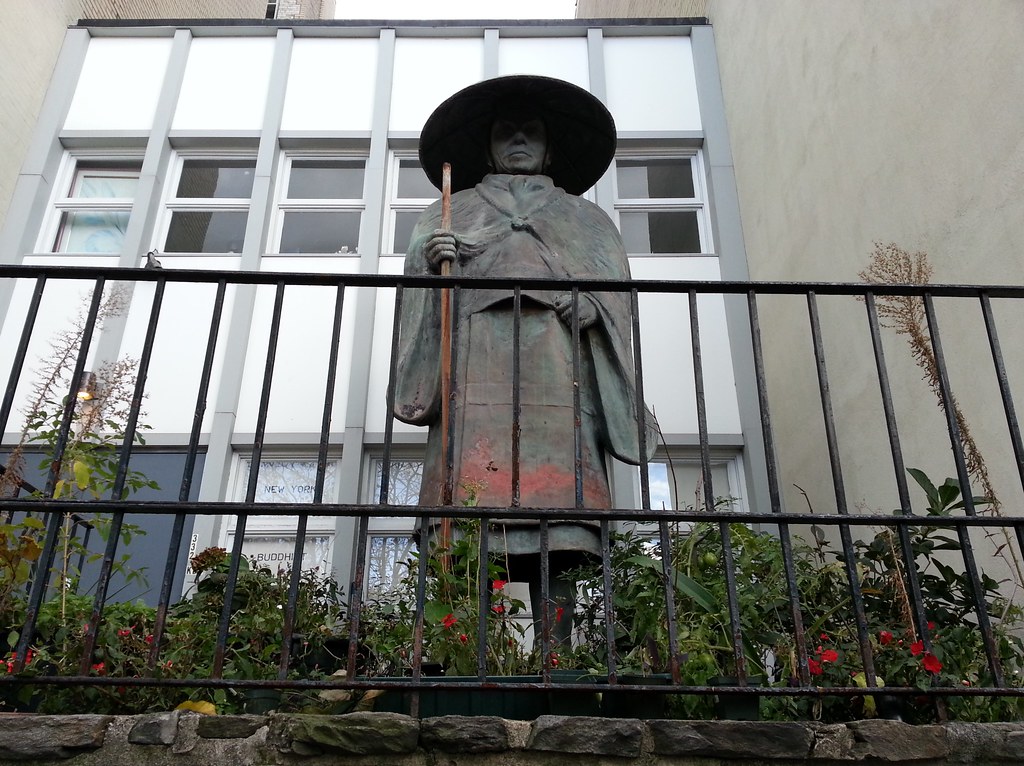
From the NY Times: "One cannot turn away unchastened from the blistered statue of Shinran Shonin outside the New York Buddhist Church on Riverside Drive, a figure of gently imposing nobility that somehow survived the atomic bombing of Hiroshima." (It was standing on a hill about a mile and a half from ground zero when the bomb detonated.) "It is now the focus of an annual peace gathering held on Aug. 5, during which a bell is tolled at 7:15 p.m. At that moment in Japan, it is 8:15 a.m. on Aug. 6, the hour that the bomb dropped."
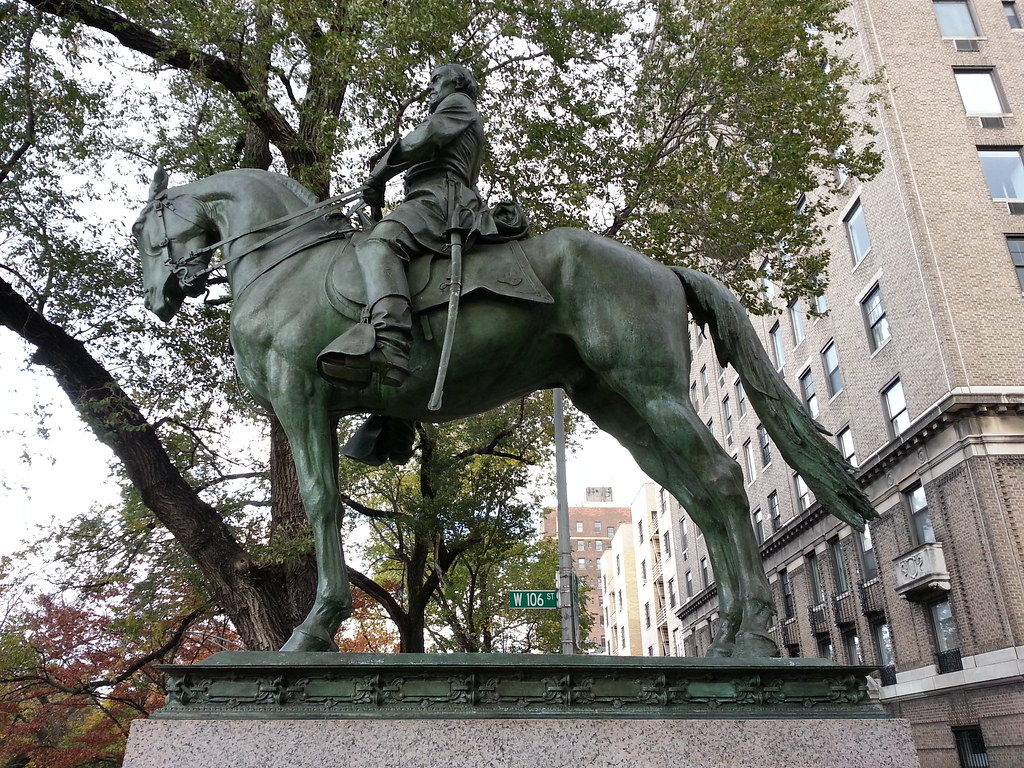
This statue, honoring the German-American Civil War general, was sculpted by old Karl Bitter and was dedicated in 1907. Sigel's sword was held in storage by the Parks Department for more than 60 years after it was detached during an attempted theft in 1941, but it was finally returned during a conservation of the statue in 2004.
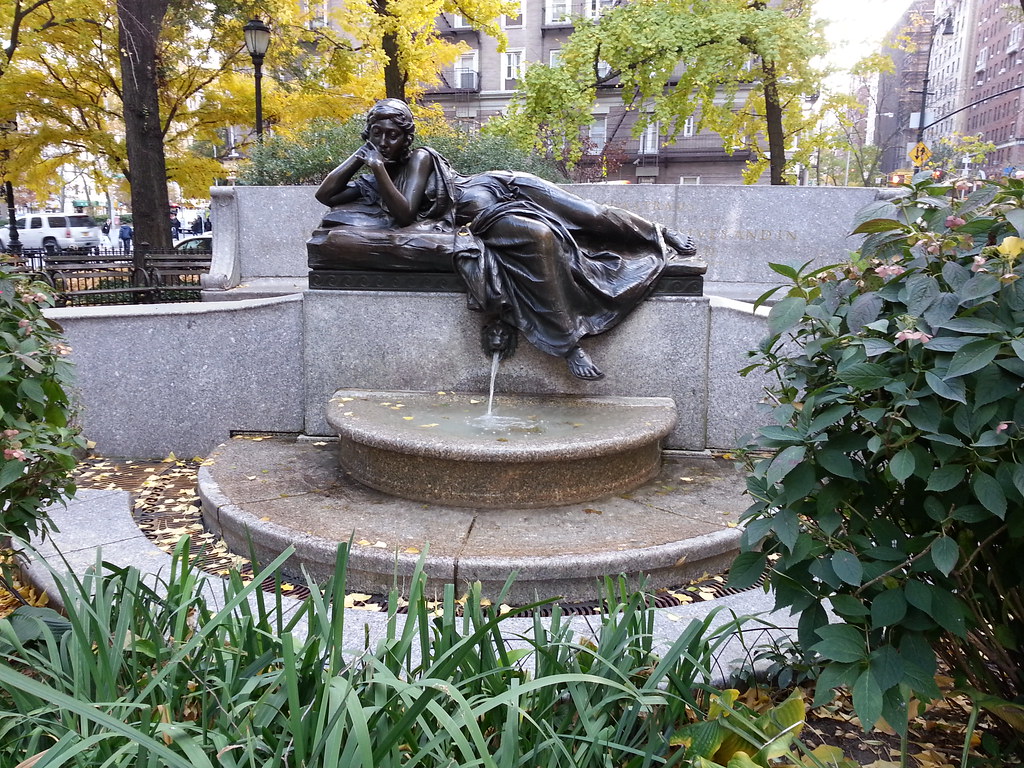
This memorial commemorates the lives and deaths of Isidor Straus, a former congressman and co-owner of Macy's, and his wife Ida. As we learned at Woodlawn Cemetery, the two of them died aboard the Titanic after Isidor passed up a lifeboat seat, seeing that there were still women and children on the ship, and Ida refused to leave his side.
The famed Audrey Munson was the model for the bronze figure of Memory, above. The flower bed from which I took this picture is a relatively recent addition; when the memorial was dedicated (with great fanfare) on April 15, 1915, three years to the day after the Titanic sank, there was a reflecting pool here in front of the sculpture.
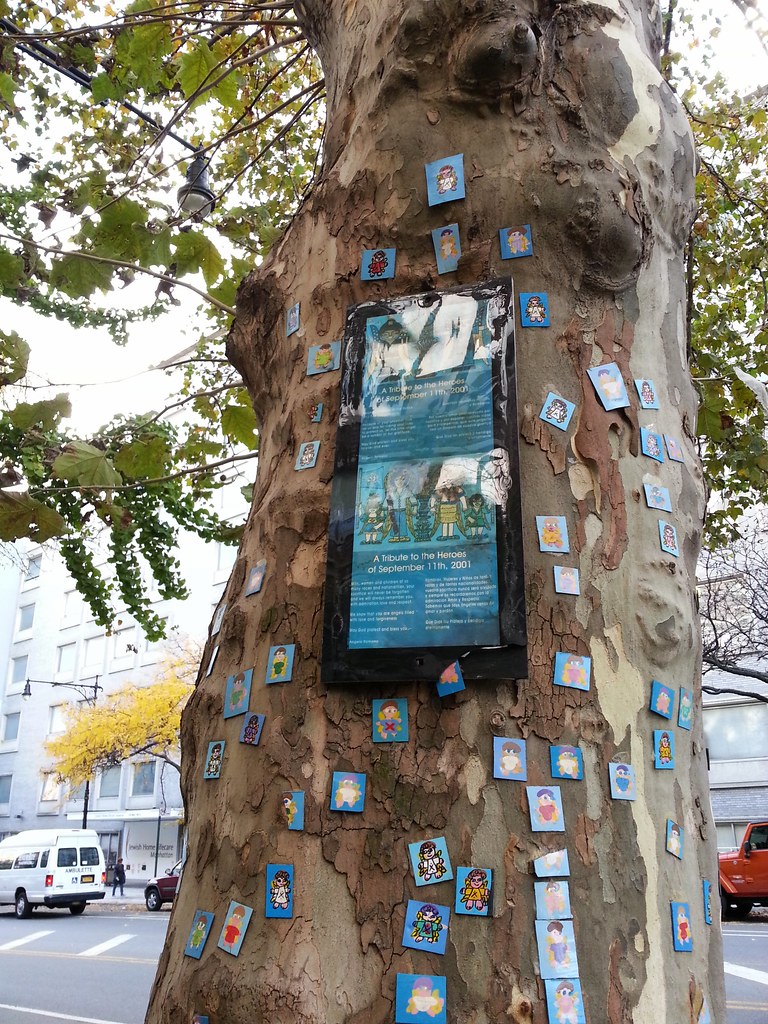
by Angelo Romano. You can take a closer look here. Surrounding the main panel are angelitos; Angelo has created and given away tens of thousands of these little angel paintings over the years.
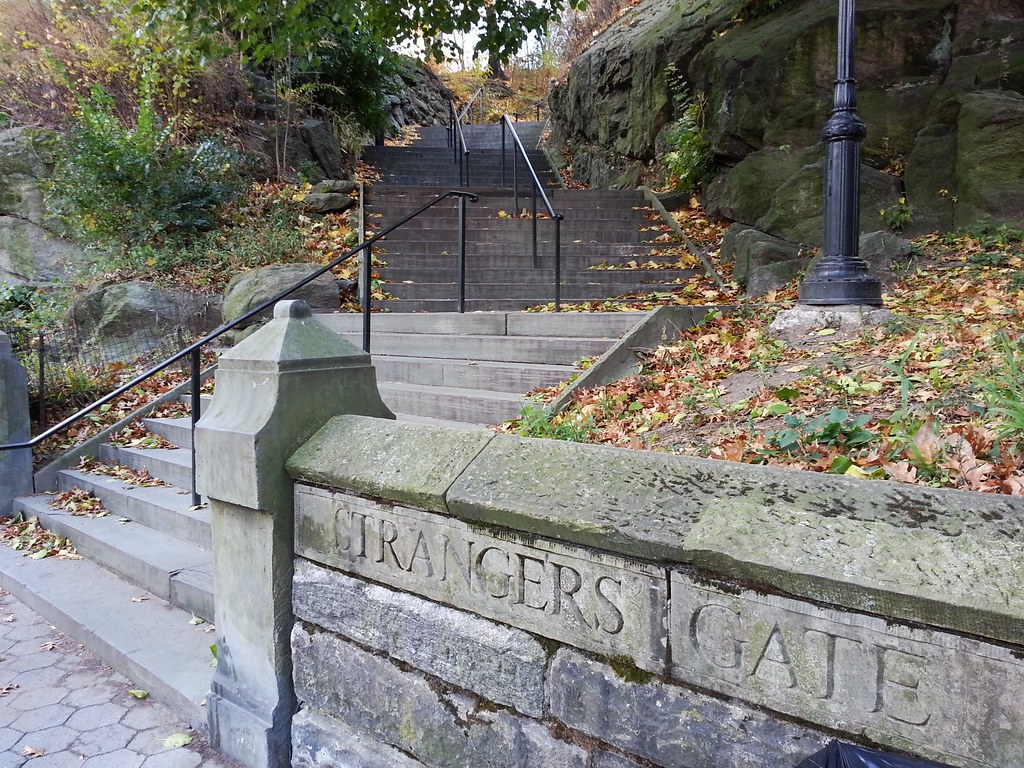
The 18 original main entrances to Central Park have had names since the 1860s, when the park was still under construction, but most of them weren't actually labeled until 1999.
From the NY Times:
There is no charge for entering the park, and no turnstiles or gatehouses are visible as you walk through the openings in the low stone wall along its borders. But if you look closely, you will see that some entrances have names carved into the sandstone: Scholars' Gate, Hunters' Gate, Explorers' Gate. The gates of Central Park represent one of the last battles fought by Frederick Law Olmsted and Calvert Vaux, the park's designers, to realize their vision of a pastoral escape from the chaos of a rapidly growing metropolis.
By the early 1860's, the nearly completed park was recognized as a masterpiece of landscape architecture. But some people thought the exemplars of high society who frequented the old park drives in their open carriages should be able to pass through tall, European-style gates, gates that reflected their place in the world. Olmsted, for his part, declared that "an iron railing always means thieves outside or bedlam inside," and he was outraged by this attempt to go against the park's original design. . . .
As Vaux put it at the time: "How fine it would be to have no gates."
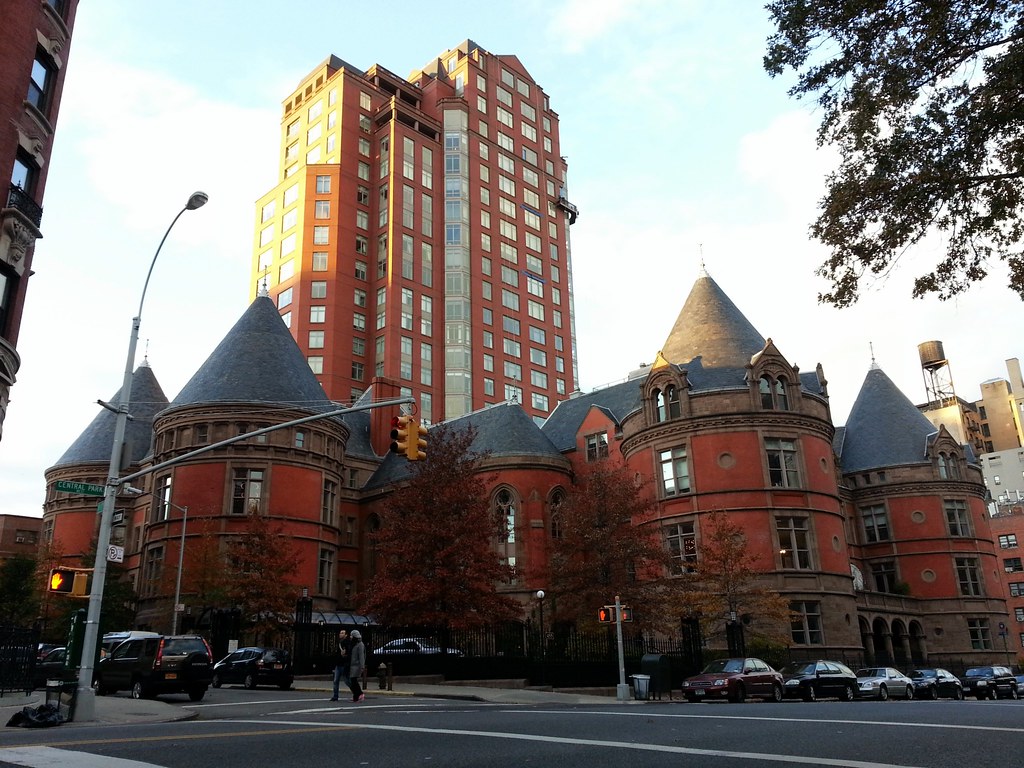
Built between 1884 and 1890, this was the first hospital in the US to focus exclusively on the treatment of cancer patients. Regarding the picturesque architecture: "Inspired as much by modern medical theory as by 16th-century French chateaux, the architect Charles Haight's round towers were designed to deter germs and dirt from accumulating in sharp corners."
In the late 1930s, the hospital moved to East 68th Street, where it has since grown into the renowned Memorial Sloan-Kettering Cancer Center. A nursing home that later took over the old hospital complex finally closed in 1974 amid accusations of Medicaid fraud and patient abuse, and the building sat vacant for the next three decades before being converted into condos in the mid-2000s. (The residential tower rising in the background was also constructed as part of that project.) Check out these amazing photos of the apartment that was built in the former chapel of the hospital, visible above in the center of the complex.
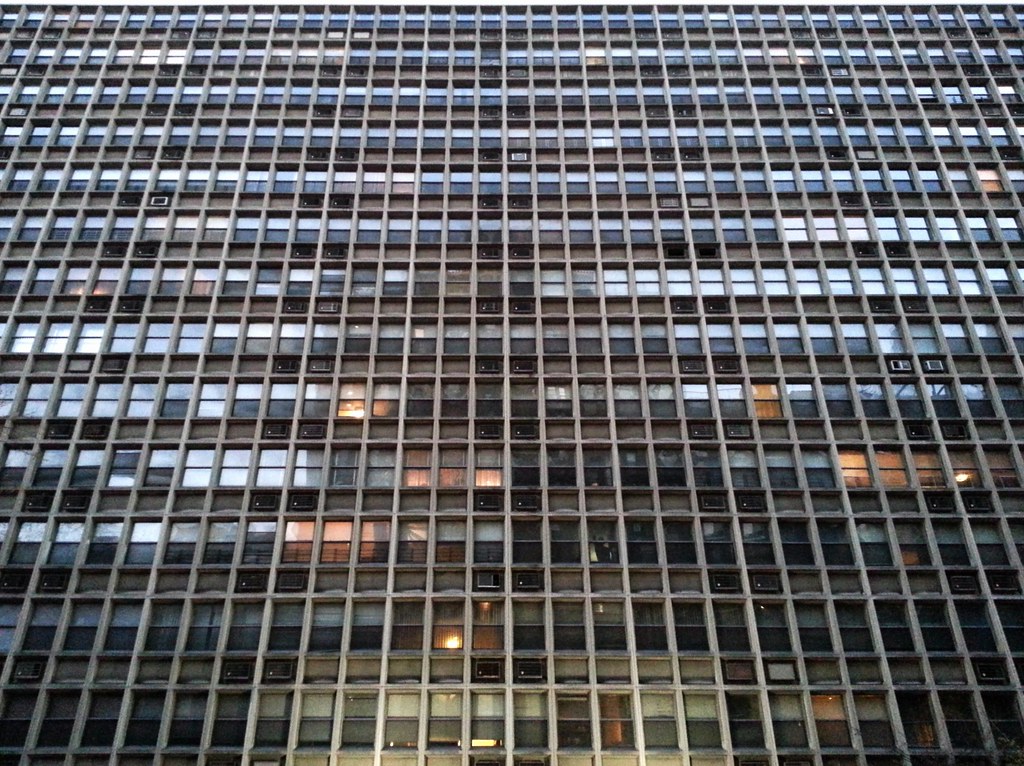
This massive "concrete beehive" was built in the mid-1960s as part of the West Side Urban Renewal project (here's a copy of the city's 1959 preliminary plan for the renewal area). It's hard to imagine these days, but parts of the Upper West Side were considered blighted just a few decades ago.

